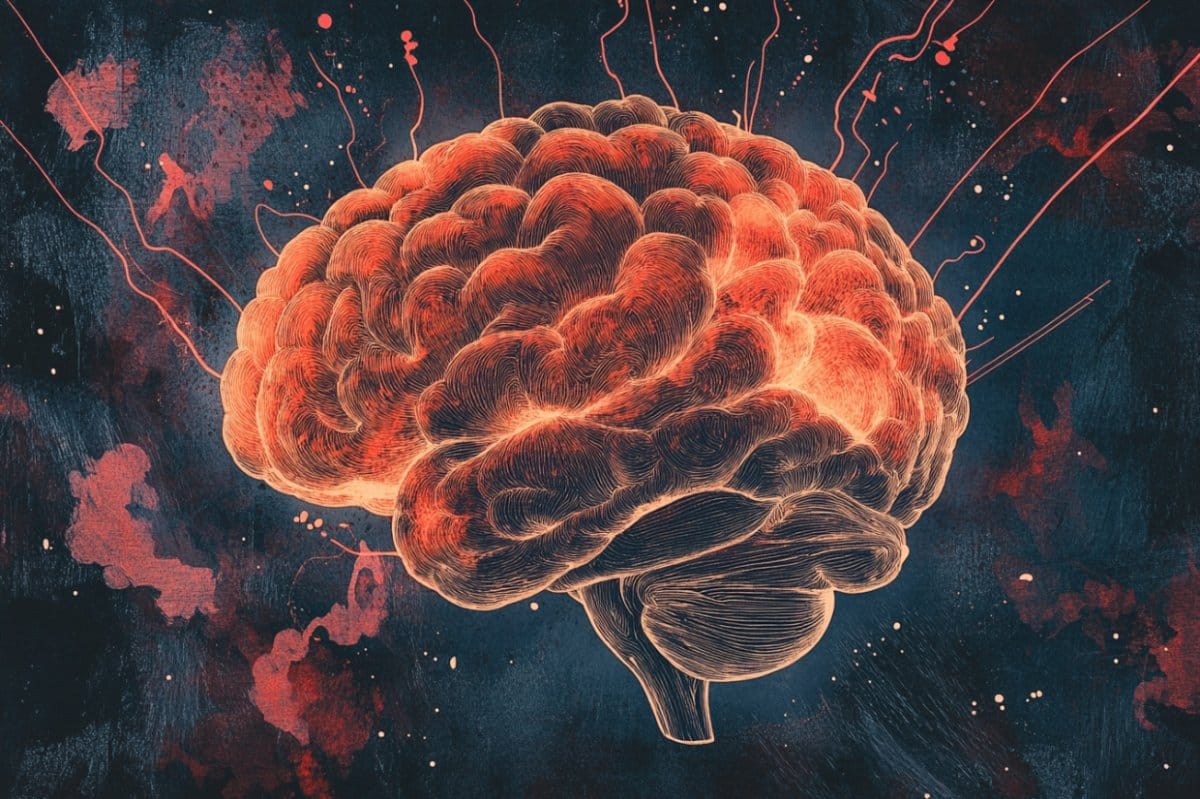Summary: New research shows that low-intensity focused ultrasound can safely target the amygdala and significantly reduce symptoms of depression, anxiety, and PTSD. In a double-blind study, patients experienced marked improvements after three weeks of daily, noninvasive ultrasound sessions.
The technology directly modulates deep brain activity without surgery or medications, offering new hope for treatment-resistant mood disorders. The study also demonstrated a strong safety profile, supporting future large-scale clinical trials.
Key Facts:
- Direct Brain Modulation: Focused ultrasound safely targets the amygdala without invasive surgery.
- Symptom Relief: Patients showed significant improvements in depression, anxiety, and PTSD after three weeks.
- Promising Safety: No serious adverse events were reported, paving the way for larger clinical trials.
Source: UT Austin
Patients suffering from depression, anxiety and trauma-related disorders experienced significant relief from their symptoms after a new treatment that uses sound waves to modulate deep brain activity, according to new research from Dell Medical School at The University of Texas at Austin.
The study, published this month in Molecular Psychiatry, demonstrates that low-intensity focused ultrasound technology can safely and effectively target the amygdala, a brain region known to be hyperactive in mood and anxiety disorders, without surgery or invasive procedures.

“Participants showed marked improvements across a range of symptoms after just three weeks of daily treatments,” said Gregory Fonzo, Ph.D., senior author of the study and assistant professor in the Department of Psychiatry & Behavioral Sciences at Dell Med.
“What makes this approach revolutionary is that it’s the first time we’ve been able to directly modulate deep brain activity without invasive procedures or medications.”
In the double-blind study, 29 patients with various mood and anxiety disorders received MRI-guided focused ultrasound to the left amygdala.
The results showed both immediate reductions in amygdala activity, and after three weeks of daily sessions, patients experienced clinically significant improvements in negative affect and symptoms of depression, anxiety and PTSD.
“For decades, the amygdala has been a target of interest, but access has required either brain surgery or indirect approaches through cortical stimulation,” said Fonzo.
“This technology opens a new frontier in psychiatric treatment, potentially offering relief to patients who haven’t responded to traditional therapies.”
The treatment was well tolerated with no serious adverse events, suggesting a promising safety profile as researchers move toward larger clinical trials.
About this psychology and brain stimulation research news
Author: Adria Johnson
Source: UT Austin
Contact: Adria Johnson – UT Austin
Image: The image is credited to Neuroscience News
Original Research: Open access.
“Low-intensity transcranial focused ultrasound amygdala neuromodulation: a double-blind sham-controlled target engagement study and unblinded single-arm clinical trial” by Gregory Fonzo et al. Molecular Psychiatry
Abstract
Low-intensity transcranial focused ultrasound amygdala neuromodulation: a double-blind sham-controlled target engagement study and unblinded single-arm clinical trial
Mood, anxiety, and trauma-related disorders (MATRDs) are highly prevalent and comorbid. A sizable number of patients do not respond to first-line treatments.
Non-invasive neuromodulation is a second-line treatment approach, but current methods rely on cortical targets to indirectly modulate subcortical structures, e.g., the amygdala, implicated in MATRDs.
Low-intensity transcranial focused ultrasound (tFUS) is a non-invasive technique for direct subcortical neuromodulation, but its safety, feasibility, and promise as a potential treatment is largely unknown.
In a target engagement study, magnetic resonance imaging (MRI)-guided tFUS to the left amygdala was administered during functional MRI (tFUS/fMRI) to test for acute modulation of blood oxygenation level dependent (BOLD) signal in a double-blind, within-subject, sham-controlled design in patients with MATRDs (N = 29) and healthy comparison subjects (N = 23).
In an unblinded treatment trial, the same patients then underwent 3-week daily (15 sessions) MRI-guided repetitive tFUS (rtFUS) to the left amygdala to examine safety, feasibility, symptom change, and change in amygdala reactivity to emotional faces.
Active vs. sham tFUS/fMRI reduced, on average, left amygdala BOLD signal and produced patient-related differences in hippocampal and insular responses. rtFUS was well-tolerated with no serious adverse events.
There were significant reductions on the primary outcome (Mood and Anxiety Symptom Questionnaire General Distress subscale; p = 0.001, Cohen’s d = 0.77), secondary outcomes (Cohen’s d of 0.43–1.50), and amygdala activation to emotional stimuli.
Findings provide initial evidence of tFUS capability to modulate amygdala function, rtFUS safety and feasibility in MATRDs, and motivate double-blind randomized controlled trials to examine efficacy.







